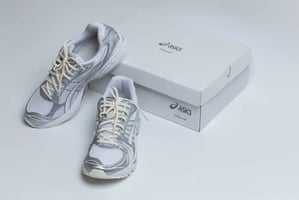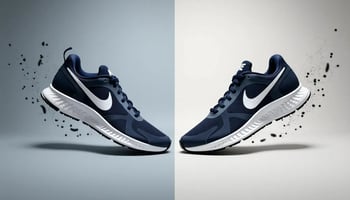The gel series of shoes from Asics stand out for their exceptional comfort, support, and...
Asics Gel Kayano 29 vs 30: Is the Upgrade Worth it?

Which Is Better?
One of the core attributes that draw people to the Asics Gel Kayano shoe is its overall stability. You receive a sure step, no matter the pace you take while pursuing your goals. Add in the supreme cushioning that reduces the impact from the foot to the hip, and you have a recipe for a fantastic investment.
Runners with overpronation concerns and higher arches will find the support levels in the 29s and 30s to be appropriate. You receive plenty of structural support externally and internally to enjoy a training session better.
For those who are neutral runners, your primary needs are generally focused on cushioning, comfort, and support. Both shoes are suitable for those needs, although the Nimbus and Cumulus designs are tailored more toward those specific needs.
With so many similarities, the core differences between these shoes involve cushion placement and weight. That means it comes down to personal preference. Which design wears better? Does one offer better, more targeted support for your needs?
Both options will provide excellent cushioning and comfort, but you may find the stability features a bit excessive for your needs if you do not have overpronation concerns to correct within your stride.
GEL Kayano Comparison Table
|
|
Asics Gel Kayano 29 |
Asics Gel Kayano 30 |
|
Midsole |
Features the FlyteFoam Blast+ midsole for a lightweight, responsive ride. |
Incorporates the FF Blast+ Eco midsole, which is a more environmentally friendly option with similar performance. |
|
Stability |
Uses Dynamic DuoMax Technology and a trusstic support system for enhanced stability. |
Enhanced with three-dimensional spatial construction for improved gait efficiency. |
|
Upper |
Includes an engineered mesh material to support activities and airflow around the foot. |
Updated with improved breathability and fit comfort, it incorporates recycled materials into the shoe. |
|
Cushioning |
Strategic gel placement throughout the shoe to deliver cushioning |
Improvements to the rear and fore areas for shock absorption benefits. |
|
Weight |
Lighter compared to previous models for less fatigue without compromising support. |
Slightly heavier due to the additional stability components and extra cushioning. |
|
Heel Counter |
Provided to offer fit improvement and better stability. |
Redesigned for more security around the foot. |
|
Design |
Several colour options are available while providing a modern aesthetic. |
More colourways and additional streamlining to deliver a refined look that works for streetwear, long runs, or running errands. |
Overall, you can see that the 30s focus more on enhanced stability while offering sustainable materials without compromising the comfort and performance that the Kayano series is known to provide.
The tradeoff by going with the 30s over the 29s is the extra weight and changes to the visual aesthetics.
What Stands Out About the Kayano 29?
How the shoe delivers support is what stands out the most about the 29s. It works well for runners who have their feet land on the outside of the heel and start rolling inward. In return, the shoe feels responsive in virtually all conditions, leading to energy-filled rebounds with each step.
The spatial construction feature from Asics offers compression improvements as the foot strikes the ground, contributing to a more comfortable stride.
What Stands Out About the Kayano 30?
As with the 29s, Asics provides several sizes and widths for men and women to consider, including options for narrow, wide, and extra wide feet.
The 4D guidance system with PureGEL tech allows for softer landings. The emphasis on cushioning and support is a superior system for runners with low arches and overpronation.
Asics rates the cushioning as being 65% softer to deliver advanced impact absorption.
How Do These Running Shoes Perform Over Long Distances?
Both models do an excellent job of delivering stability with each step. This feature is crucial for long-distance runners because it proactively works to prevent overpronation. By maintaining the proper alignment, runners have fewer aches and pains to manage after their training sessions are over.
Maintaining proper physical structures and form while running will also lessen the risk of experiencing an injury during training.
Additionally, the superior cushioning in both models helps absorb impact and reduce fatigue, allowing runners to maintain comfort over lengthy distances. The feet stay dry with the enhanced upper design, especially in the 30s, which keeps you more comfortable as the minutes tick by.
Both designs are built to withstand the rigours of difficult training sessions, although they are meant more for the street or track. Running on trails can cause these shoes to see increased wear and tear concerns.
Finally, the supportive design and secure fit work with the foot to ensure adequate placement without a restrictive toe box. By keeping runners comfortable without placing unnecessary pressure on joints or soft tissues, the focus can stay on your goals.



